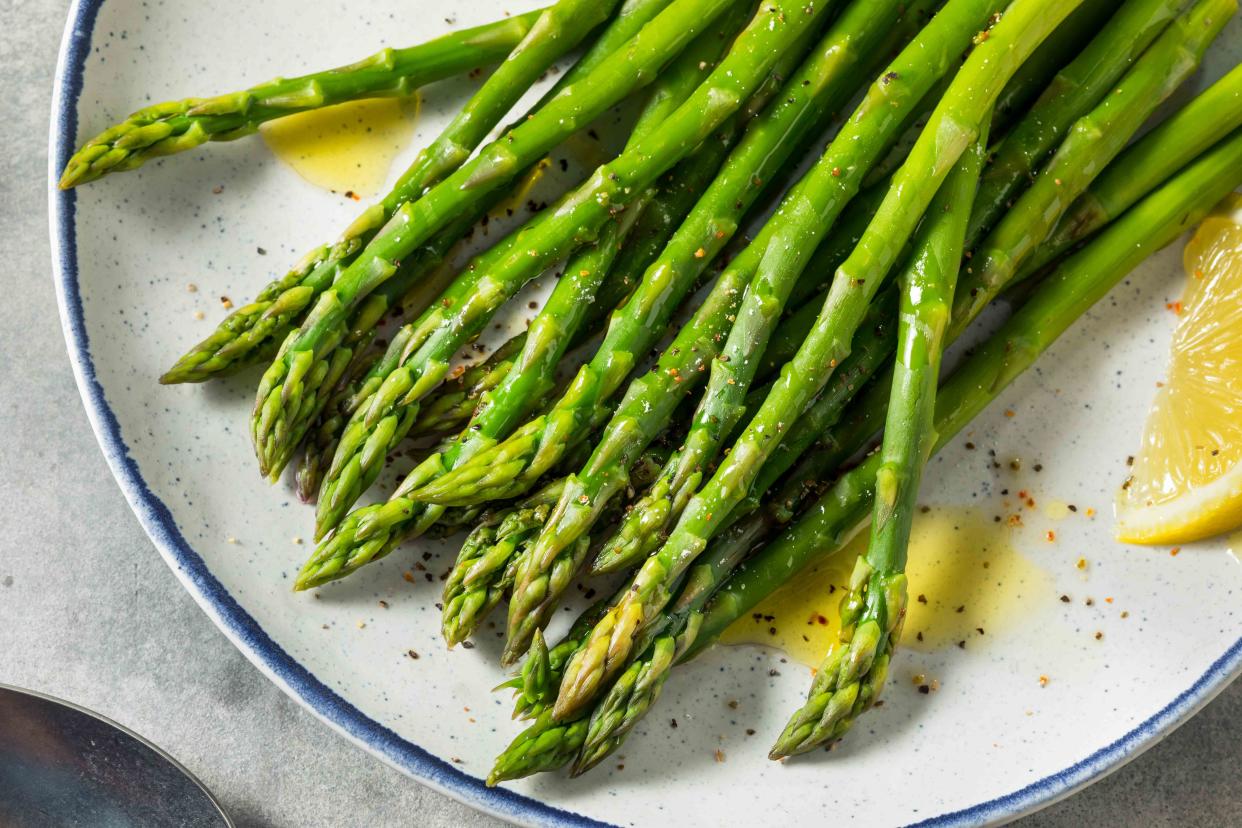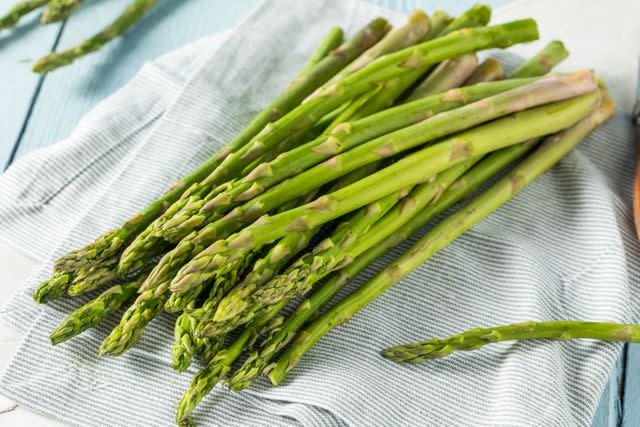The Only Way You Should Trim Asparagus, According to an Expert
Using the right technique will yield perfectly tender stalks.

Simply Recipes / Getty Images
It's officially spring! The bounty of produce that floods summer farmer’s markets is beginning to trickle in and this time of year might be my favorite for scoring flavorful, fresh (and fleeting!) veggies. I’m talking pea shoots, favas, artichokes, and, of course, asparagus.
Now, asparagus is available year-round in many supermarkets, and I admit to caving to a sad-looking bunch sometimes in the off-season. However, nothing beats fresh, spring-time asparagus—it’s fragrant, floral, and, in my humble opinion, actually tastes like the color green itself! I wolf down as many verdant bundles of the delicate veggie as possible during its short season.
While I love asparagus raw, grilled, roasted, stewed, pickled, you name it, I often find myself struggling to prepare it. I find that I either cut off too much of the stalk or not enough, and I'm left with fibrous and woody stems that ruin the eating experience.
There are a plethora of methods for trimming asparagus out there, but I hadn't quite found the one that worked for me, so I consulted Chef Shimi Aaron to uncover the best way to prepare asparagus just in time for peak season.
Is Snapping or Cutting Asparagus Better?
My mother taught me to snap asparagus, ascribing to the theory that each stalk would break along the natural line between tender and fibrous. However, Chef Shimi says, “I feel that snapping is never the right way to treat any vegetable, especially asparagus.”
Unless you don’t have a knife on hand, and snapping is your only option, Chef Shimi explains that when you snap, “you can’t control how much of the stalk you are actually removing. Snapping it will most likely end up wasting another 30 percent of the part of the asparagus you should use.”

Simply Recipes / Getty Images
How Much of the Stalk to Cut Off
“I usually end up trimming about 20 percent of it,” says Chef Shimi. Generally, cutting slightly above the line where the color transitions from white to green or purple is a safe bet. After the ends are trimmed, he says to “use a sharp peeler to remove any remaining fibrous skin. Make sure to only peel the skin and not the stem itself.” Duly noted!
It also helps to pick a fresh bunch. “Asparagus should be firm and have a good green color,” Chef Shimi says. “It should feel plump and not have ends that are too white.”
With a plump and green bunch, the perfect amount of stalk trimmed off, and a gentle peeling of any remaining fibrous skin along the bottom, each tender stalk should burst with juicy flavor without even a hint of stringy, woody texture.
Read the original article on Simply Recipes.






